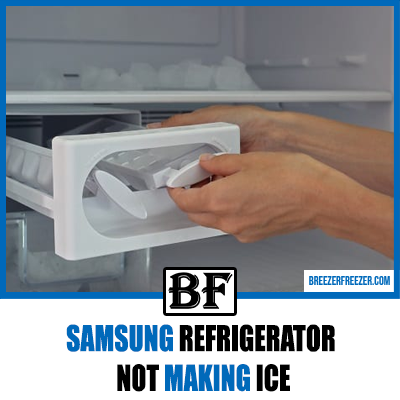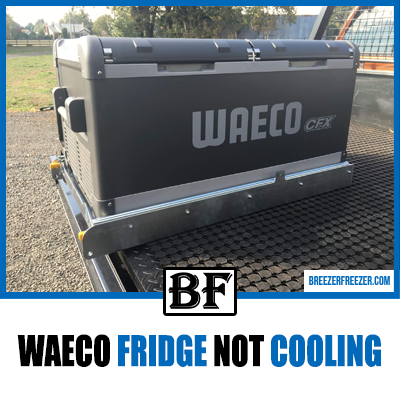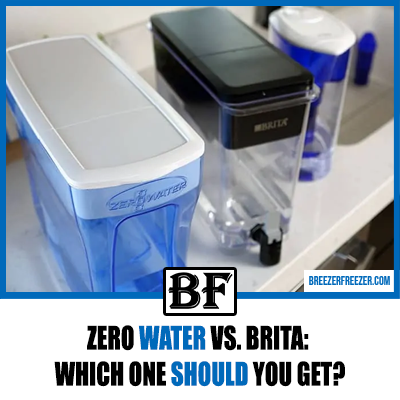Refrigerator Temperature Guide

Most people think that any temperature works for all types of food when it comes to refrigerators, but that is far from the truth. There are different optimal temperatures for different types of food items that go into the fridge.
This varied range allows your food to get rid of or prevent harmful bacteria from forming and spoiling your food faster than its intended shelf life.
In this article, we will talk about the ideal refrigerator temperatures for different types of food.
What is the ideal temperature for a refrigerator?
According to experts from the US Food and Drug Administration (FDA), the optimal temperature for the main compartment in your refrigerator is from 37 to 40 degrees Fahrenheit. But it is best if you can manage to keep it between 35 to 38 degrees Fahrenheit.
You can use a refrigerator thermometer to check the temperature or use the one that comes inbuilt with your fridge.
In most cases, if you want to get the accurate temperature, it is best to use at least two thermometers to get a correct reading. In older version refrigerators, the top and bottom shelves may also have different temperatures due to the distance from the freezer. Hence, you may want to get two thermometers at once and place them on each shelf.
To get a prolonged life from perishable foods, make sure always to refrigerate them within 1-2 hours; especially if it is a hot or humid day outside (90 degrees Fahrenheit or more)
The ideal temperature for all freezers is calibrated at 0 degrees Fahrenheit. You should regularly check the freezer’s temperature to make sure that it works at the right temperature.
Avoid overstuffing the freezer and allow cool air to circulate evenly. This will ensure that your food stays frozen for as long as possible without getting contaminated or spoilt.
Make sure that you always refrigerate perishable items as soon as possible.
Many people think that you cannot refreeze an already unfrozen food item. But under certain circumstances, such as if the food is at 40 degrees Fahrenheit or lower, you can refreeze it.
Make sure to avoid refreezing food that has been out of the freezer temperature or more than 40 degrees Fahrenheit for more than 2 hours.
Other than these two, the different compartments in the refrigerator typically consist of storage drawers where you can adjust the temperature for low or high humidity. You can set the temperature at low humidity for food items such as fruits and vegetables. This setting ensures that the gasses released by the food get adequately ventilated and keep them from getting spoilt quickly.
Foods that thrive in low humidity are kiwis, figs, apples, mangoes, bananas, dragon fruit, and avocados. Ensure that the fruits are ripe before going into the freezer, especially for fruits like bananas and avocados.
High humidity temperatures allow food items like green and leafy vegetables, peppers, cabbages, broccoli, peas, and cucumbers to stay fresh longer.
Some tips for getting the best use out of your refrigerator:
- Allow your food to cool down before adding it inside the fridge, or else you risk a rapid growth of bacteria in your food.
- Always clean up your fridge at least once or twice a week and wipe down any dripping, grease, or spills. Since the refrigerator is a place to store your food, you want it to have a clean, uncontaminated, and healthy environment to sit in.
- Make sure to cover all your food items before popping them into the refrigerator.
- Sometimes, you might experience a freezer burn when you put your food into the freezer. Generally, freezer burns occur due to the food quality but not because of the fridge’s temperature. It can also happen if you do not package your food items properly before putting them into the refrigerator.
This food is not unsafe to eat, but the appearance may put you off if sight is a part of your daily meals.
- Ensure monitoring the temperatures in your refrigerators frequently. Some refrigerators may have one inbuilt, but you can always purchase one at any convenience store if you don’t.
Here is a list of all the ideal refrigerator temperatures for different food items:
The best refrigerator temperature for beer
The best refrigerator temperature for beer is between 33 degrees Fahrenheit to 40 degrees Fahrenheit but ideally between 36 degrees Fahrenheit to 28 degrees Fahrenheit.
If the beer is kept at too cold temperature, they release less carbonation, which means the beer is less aromatic. Sometimes, the cold can also numb your palate.
According to experts, the perfect temperature for serving beer depends on the type of beer. It is recommended that you let your beers sit out at room temperature for a while before you crack open a bottle or a can to experience the taste to its fullest potential.
The best refrigerator temperature for food
The best refrigerator temperature for food is at 40 degrees Fahrenheit or lower. Always remember to let your appliances cool down to room temperature before putting them in the fridge. Check that your freezer is at 0 degrees Fahrenheit if you place any food items inside the freezer.
The best refrigerator temperature for meat
You should always store meat in the coldest region of your refrigerator. The best refrigerator temperature for beef is between 28 degrees Fahrenheit to 32 degrees Fahrenheit.
It would be best if you were very wary of the temperature consistency when storing meat. If the refrigerator temperature reaches 50 degrees Fahrenheit or higher, the bacteria in the meat may start to multiply.
The best refrigerator temperature for red wine
Fifty-five degrees Fahrenheit is the ideal temperature for a bottle of red wine. You can even have a lower or a higher temperature and store it safely as long as the temperature is consistent.
If your wine is too hot or too cold, the chemical reactions in your wine will develop into a sour taste and ruin your wine. Check out our best wine fridges under $500.
The best refrigerator temperature for soda
Typically, you can keep sodas at as cold a temperature as you like. Generally, it’s best to keep soda at about 30 degrees Fahrenheit to 42 degrees Fahrenheit.
The best refrigerator temperature for white wine
The ideal temperature for white wine is 50 degrees Fahrenheit to 54 degrees Fahrenheit. The serving temperature for white wine is relatively much lower than red wine.
If your white wine is too cold, it can give you a highly muted flavor, and you might miss out on the unique taste of the wine.
The best refrigerator temperature for vegetables
The best refrigerator temperature for veggies is around 34 degrees Fahrenheit. You should store your vegetables in the crisper section of the fridge for prolonged life.
The temperature also depends on the type of vegetables you are storing, such as cool-season or warm-season crops. Cool-season crops are best stored at 32 to 35 degrees Fahrenheit, whereas warm-season crops are better kept at 45 to 55 degrees Fahrenheit.




